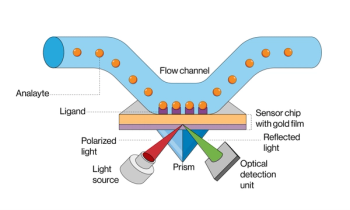
Unlocking ICP-MS Accuracy and Productivity with Microwave Digestion
Key Takeaways
- Microwave digestion offers superior sample breakdown, reducing contamination and improving reproducibility in ICP-MS analyses.
- Innovations in microwave design and productivity tools enhance throughput, data integrity, and compliance in high-throughput labs.
This article discusses pre-analytical best practices, recent innovations in MW design, and other productivity tools to consider throughout the workflow, explaining how these factors collectively enhance analytical accuracy and data integrity.
Achieving high accuracy and productivity in inductively coupled plasma–mass spectroscopy (ICP-MS) analyses begins with optimized sample preparation. Microwave (MW) digestion provides significant advantages for laboratories analyzing diverse matrices, enabling precise elemental recovery, lower detection limits, faster throughput, and reduced contamination risk. This article discusses pre-analytical best practices, recent innovations in MW design, and other productivity tools to consider throughout the workflow, explaining how these factors collectively enhance analytical accuracy and data integrity. Real-world case studies will highlight how laboratories can implement these strategies to strengthen their ICP-MS methods and overcome common sample prep challenges.
Inductively coupled plasma–mass spectroscopy (ICP-MS) is widely regarded as one of the most powerful analytical techniques for the detection of trace and ultratrace elements across diverse sample types. However, the technique’s ability to provide highly accurate and reproducible data depends significantly on the quality of the sample preparation method employed. Among the various techniques available for pre-analytical sample processing, microwave-assisted acid digestion has become the method of choice in many analytical laboratories due to its ability to effectively break down complex matrices while minimizing contamination and preserving analyte integrity (1,2).
Traditional sample digestion methods, such as open-vessel hot plate or block digestion, have historically posed significant limitations in terms of time consumption, risk of contamination, operator variability, loss of volatile elements, and insufficient digestion of challenging matrices. See Table I for a comparison of hot block vs microwave (rotor-based) technology.
These limitations have led to inaccuracies in elemental recovery, particularly when analyzing samples with high organic content or resistant mineral structures.
Fundamentals of Microwave Digestion
In contrast, microwave digestion utilizes sealed pressure vessels and precise temperature control to accelerate the breakdown of samples in strong acids. The result is a faster, more complete digestion process with minimal loss of volatile elements and significantly improved reproducibility. In high-throughput laboratories and regulated environments such as food safety, environmental monitoring, and pharmaceutical quality control, these advantages translate into measurable gains in productivity, data integrity, and compliance (3).
This article explores the key factors that contribute to successful microwave digestion for ICP-MS workflows. It highlights best practices in pre-analytical preparation, recent innovations in system design, and practical tools to reduce contamination and improve throughput. Real-world examples and performance benchmarks demonstrate how adopting modern digestion strategies can enhance accuracy and reproducibility while streamlining lab operations.
Microwave digestion systems operate on the principle of dielectric heating, where microwave energy is absorbed by polar molecules in acid mixtures, resulting in rapid temperature and pressure increases within sealed vessels. This facilitates efficient sample breakdown and the dissolution of matrix components into a homogenous solution suitable for elemental analysis via ICP-MS.
Overcoming Sample Types and Matrix Challenges
Microwave digestion is suitable for a wide variety of matrices, from easier to digest matrices such as biological tissues, foodstuffs, and environmental samples (soil, water, sediments), to more challenging materials such as polymers, industrial materials, metal alloys and ceramics. Each matrix presents unique challenges in terms of digestion efficiency and contamination risk. For instance, high-fat foods and biological fluids require careful optimization to avoid incomplete digestion, carryover contamination, or exothermic reactions. Samples such as metal alloys and ceramics are particularly challenging to digest, as they require aggressive acid mixtures, and high temperature for extended time periods. Depending on the sample types and throughput needs, laboratories typically employ one of two main microwave digestion platforms: rotor-based, closed-vessel systems or single reaction chamber (SRC) technology, as seen in Figures 1–3 (2,4). Rotor-based systems use various rotors to match specific applications, such as medium-pressure rotor systems suited for high throughput environmental samples, high-performance rotor systems for cannabis and food applications, and high-pressure rotors, which are best used for more challenging matrices such as rocks and metal alloys. An example of a rotor-based microwave digestion system is shown in Figure 2, along with different rotors shown in Figure 3.
Single-Reaction Chamber (SRC) Technology
For laboratories with particularly challenging organic or inorganic matrices to digest, that are looking to improve throughput and safety as well as increase automation and reduce labor time and costs, SRC technology is another option worth considering. Comparison table of capabilities of rotor-based technology vs SRC technology is illustrated in Table II.
SRC technology was developed to overcome inherent limitations of rotor-based systems, such as limited time at maximum temperature for challenging samples, the need to assemble and disassemble vessels rapidly, batching matrices of similar reactivities, vessel cleaning and limited throughput capabilities. The basic principles and workflow of SRC technology is illustrated in Figure 4.
Microwave Digestion Procedure
A standard digestion procedure involves weighing a representative sample into a clean, chemically inert digestion vessel. Concentrated acids, most commonly nitric acid (HNO3) alone or in combination with hydrochloric acid (HCl) or hydrogen peroxide (H2O2), are added to promote matrix dissolution. Depending on the sample type and elements of interest, other acids such as sulfuric (H2SO4), phosphoric (H3PO4), hydrofluoric (HF), fluoroboric (HBF4), or others may be used. Sealed vessels are placed into the microwave system, where the digestion process follows a precisely controlled temperature ramp. For easier-to-digest samples, temperatures typically reach 180–220 °C within a 15–30-min cycle. More difficult matrices may require temperatures up to 280 °C, maintained for 30 min or longer to ensure complete digestion.
Advanced microwave systems incorporate real-time temperature and pressure sensors, allowing for dynamic feedback control and reproducible conditions across multiple vessels. Rotor-based systems and SRC technology, further enable simultaneous digestion of different sample types under uniform conditions, reducing the risk of batch failure. With rotor-based closed-vessel microwave digestion systems, samples of similar reactivities must be run together. However, when utilizing SRC technology, all samples are at the same temperature and pressure conditions, allowing for full mixed-batch capability.
Contamination Controls
Contamination is a major concern in trace elemental analysis. High-purity reagents, Class A glassware, and rigorous cleaning protocols are critical. Many labs employ clean chemistry tools, such as automated acid purification systems (sub-boiling distillation apparatus) as shown in Figure 5 (5).
Steam Cleaning Systems
Additional useful tools to reduce contamination are acid steam cleaning systems and non-contact reagent dispensers, which minimize exposure, reduce variability, and improve overall laboratory workflow. A commercially-available system is shown in Figure 6.
As mentioned, rigorous cleaning protocols are an essential aspect of the laboratory workflow for any laboratory looking to achieve trace metal detection limits. There are conventional techniques, such as acid baths and acid soaks, as well as using the microwave to clean vessels, but these are not as efficient and effective as acid steam cleaning. With acid steam cleaning, vessels to be cleaned are placed into a glass vat containing HNO3. The chamber is closed, and the steam cleaning process commences. After about two hours, all vessels are clean and ready to be used.
When working at trace or ultra-trace levels, the use of high-purity or ultra-high-purity acids is critical to minimize contamination and ensure analytical accuracy. Commercial ultrapure reagents represent a significant laboratory expense, often exceeding $1000 USD per liter, and may be subject to extended supplier lead times. In-house sub-boiling distillation offers an effective solution to both supply chain challenges and cost constraints. As a result, laboratories can convert reagent-grade acids into ultrapure quality at a fraction of the commercial price, achieving cost reductions of up to 90% while maintaining the required analytical purity.
Automated Dosing and Dispensing Systems
Dosing reagents into digestion vessels is still one of the most tedious and unpleasant steps in the laboratory, as it requires a significant amount of labor time and cost and exposes the operator to concentrated acids. This step is typically done manually and, as a result, has a number of drawbacks, including safety concerns, human error, and high risk of contamination. Addressing this task is key for laboratories wanting to improve lab safety and sample prep workflow.
One such tool is an automatic dosing and dispensing station, which provides enhanced safety with a hands-off approach—no acid handling or exposure to acid fumes. An automated dosing and dispensing station is shown in Figure 7.
This approach represents a reliable, fully automated way of dispensing acids, which is compatible with a wide range of vials and vessels. Its touch-screen interface streamlines operation, while automation reduces labor and boosts productivity. Constructed from anticorrosive polypropylene, it features a magnetic safety door, integrated fume filtration, and compatibility with up to six reagents, including hydrofluoric acid. Automatic line flushing simplifies acid changes, and a dedicated drain collects waste into a carboy. Real-time reagent and waste monitoring further enhances safety, efficiency, and ease of use.
Microwave Digestion and ICP-MS Compatibility
Post-digestion handling is just as critical as the digestion process itself. Samples are typically cooled to room temperature, then diluted with ultra-pure water to a known volume in Class A volumetric flasks. The final solution must be free of particulates and stable enough to prevent analyte loss or carryover. Vessel materials (PTFE and quartz, for example) should be selected based on chemical compatibility and the detection limits required for specific elements.
When done correctly, microwave digestion provides a robust foundation for ICP-MS measurements with minimal interference, ensuring compliance with regulatory methods such as EPA 3015, EPA 3051, and USP <232/233>.
Case Studies
To exemplify the real-world capability of microwave digestion and contamination control systems, here are two examples of contract labs that are realizing the benefits of these technologies.
Aerospace Materials Testing Laboratory
Dirats Laboratories, a leading contract laboratory in advanced elemental analysis for industries such as aerospace, defense, and electronics, specializes in the digestion and analysis of challenging materials including superalloys, ceramics, and composites. Seeking to improve safety, consistency, and turnaround times, they replaced traditional fusion and open-vessel methods with a single reaction chamber microwave digestion system. This upgrade reduced acid use, improved safety, and cut turnaround times by nearly 50% while achieving complete elemental recovery. Paired with an automated acid steam cleaning system, Dirats now operates a fully integrated, contamination-free workflow that safeguards ultra-trace accuracy and enhances laboratory efficiency (5).
Food & Nutraceutical Contract Laboratory
SGS (formerly Chemical Solutions/CSL), a leading contract laboratory based in Harrisburg, PA, specializes in metals, minerals, and elemental species analysis for over 400 clients across diverse industries. With a monthly workload of roughly 4000 samples and demanding turnaround times as short as same-day, CSL relies on a robust suite of microwave (MW) technologies, including four SRC digestion systems, two rotor-based microwaves, and two acid steam cleaning units, to meet extraordinary throughput and analytical precision requirements. The SRC’s ability to process mixed sample types at uniform high temperature and pressure ensures complete digestion, even for volatile elements, reducing re-runs and improving recoveries. The rotor-based system provides efficient high-throughput digestion for uniform sample batches, while the acid cleaning system maintains contamination-free labware without consuming valuable instrument time (6).
Conclusion
MW digestion has become an indispensable tool in modern ICP-MS workflows, offering laboratories a reliable, efficient, and reproducible means of preparing samples for trace elemental analysis. The technology addresses longstanding challenges associated with traditional digestion methods, including inconsistent recovery, contamination risks, incomplete digestion and limited throughput.
By adopting closed-vessel microwave digestion systems and adhering to best practices in sample handling, labs can significantly enhance data quality and operational efficiency. The method supports compliance with globally recognized standards while accommodating the rigorous demands of industries such as food safety, environmental testing, and pharmaceutical manufacturing.
Looking ahead, continued innovation in digestion vessel materials, automation, and the integration of additional pre-analytical workflow solutions will further elevate the role of microwave digestion in analytical sciences (3). Laboratories that invest in these advancements will be well-positioned to meet evolving regulatory expectations, enhance productivity, and maintain data integrity, even in the most challenging analytical scenarios.
References
- Microwave Digestion for Agriculture Analysis. Spectroscopy Online, May, 2025.
https://www.spectroscopyonline.com/view/microwave-digestion-for-agriculture-analysis - Microwave Digestion for Battery Materials. Spectroscopy Online, April, 2025.
https://www.spectroscopyonline.com/view/pre-analytical-workflow-for-lithium-ion-batteries - Innovations in Microwave Sample Preparation: Total Workflow Solutions. Milestone website. December, 2024.
https://www.milestonesci.com/wp-content/uploads/2024/12/LX_Milestone_Microwave-Sample-Prep_eBook_12.24.pdf - SRC Technology eBook – Spectroscopy. Milestone website. August, 2018.
https://www.milestonesci.com/wp-content/uploads/2019/01/SRC-Technology-EBook-Spectroscopy-Milestone-August-2018-b.pdf - Lab Profile: Dirats Laboratories. Milestone website. June, 2025.
https://www.milestonesci.com/wp-content/uploads/2025/06/Lab-Profile-Dirats-06.2025-Final.pdf - Lab Profile: Chemical Solutions (SGS). Milestone website. August, 2019.
https://www.milestonesci.com/wp-content/uploads/2025/08/Chemical-Solutions-Lab-Profile-USREV012819.pdf
Milestone Products Mentioned in this Article
Figure 1: Single Reaction Chamber Microwave Digestion System–ultraWAVE 3
Figure 2: Rotor-based Microwave Digestion System–ETHOS UP
Figure 3: Sample Holders for ETHOS UP High throughput–MAXI 44 High performance; MAXI 24 HP; High pressure–SK 15 ET
Figure 5: Sub-boiling Distillation–duoPUR
Figure 6: Steam Cleaning–traceCLEAN
Figure 7: Automated Acid Dispensing–easyFILL
Newsletter
Get essential updates on the latest spectroscopy technologies, regulatory standards, and best practices—subscribe today to Spectroscopy.





